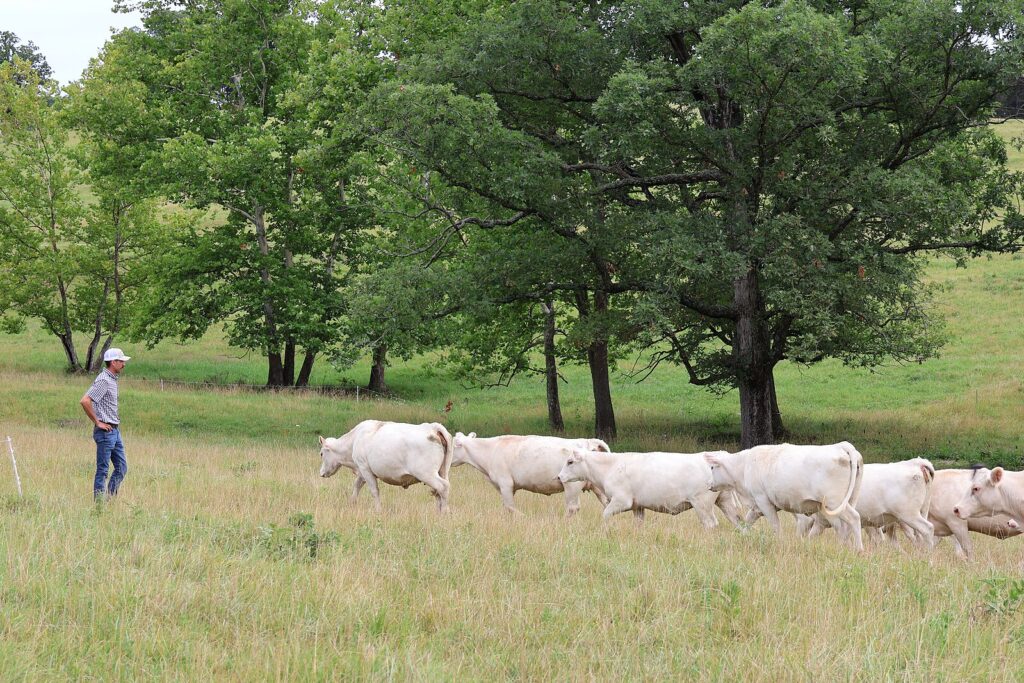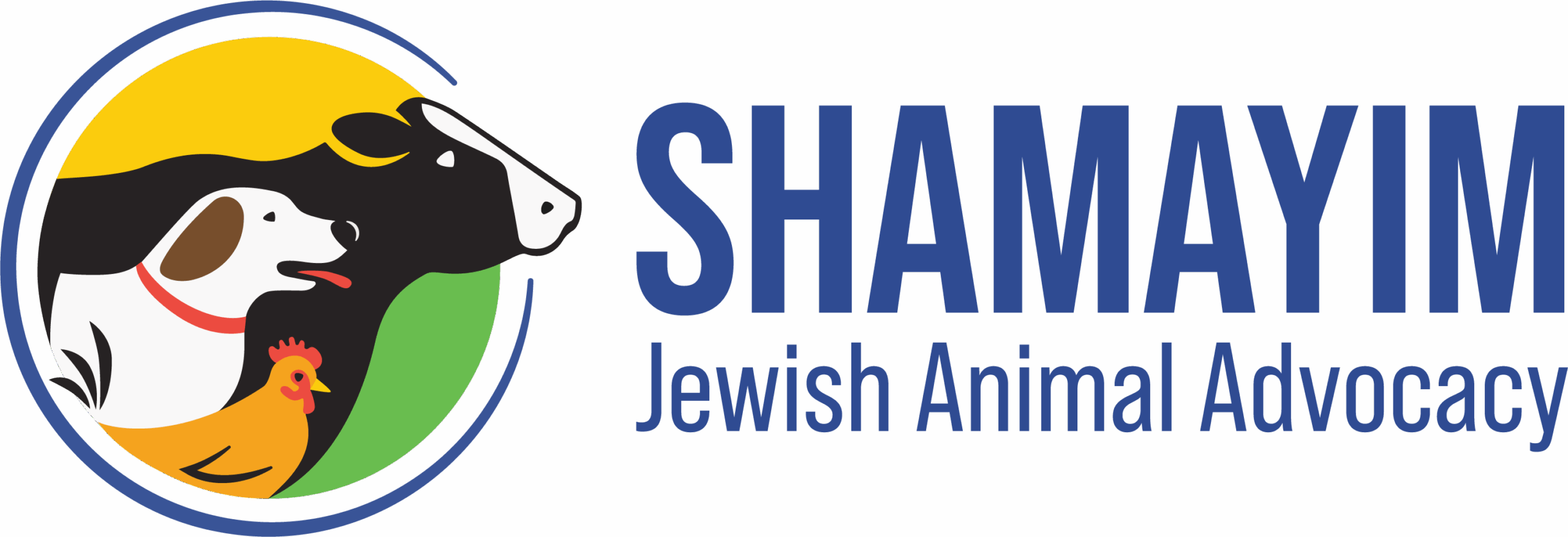
We are living through a profound crisis of our food system; one soaked in suffering, saturated with chemicals, and stripped of its sacredness. This systemic breakdown compels us to ask a pressing question: What would a food system look like that truly honors the Earth as a Divine creation, values animals as sentient beings, and restores human dignity in labor and consumption?
In Jewish tradition, agriculture is far more than a profession; it is a spiritual practice deeply intertwined with our covenant with the Divine. It’s no coincidence that so many of our mitzvot, from shmita (letting the land rest) to pe’ah (leaving the corners of the field for the poor), and bal tashchit (do not destroy and waste), are tied to how we cultivate and share our food. The land is never “ours” in the full sense; it is a sacred trust, loaned to us by God with the mandate to “till it and to tend it” (l’ovdah u’l’shomrah), to work it and to protect it. With this sacred mandate in mind, I argue that Judaism not only permits but actively supports the principles of regenerative farming, provided it aligns with Jewish ethics of compassion, justice, and sustainability.
What is Regenerative Farming?
Regenerative farming is an agricultural approach that focuses on restoring and enhancing ecosystem health. It emphasizes practices designed to build soil fertility, increase biodiversity, improve water cycles, and strengthen the overall resilience of a farm. Key methods include resting the soil, rotating crops, using cover crops, integrating livestock, and avoiding synthetic chemical inputs. Through these practices, regenerative farming actively works to reverse environmental degradation and produce healthier food.
However, regenerative farming is more than just a technical fix for soil degradation. It represents a profound moral and spiritual pivot away from an industrial system that sees land as mere property, animals as machines, and people as consumers. Instead, regenerative agriculture views the Earth as an interconnected web of life, a perspective deeply aligned with the Jewish vision of Creation. It asks a crucial question: How do we feed people while simultaneously healing the land?
This vision resonates deeply with the Genesis narrative, where humanity is placed in the Garden of Eden not as exploiters, but as stewards, a mandate echoed throughout Torah law. A powerful example of this stewardship is the practice of shmita, the sabbatical year. This revolutionary concept demands rest not only for humans but also for the land itself, disrupting cycles of overproduction and greed and declaring that even the Earth is entitled to a Sabbath. In this light, the core practices of regenerative farming directly mirror the spiritual logic of shmita. It is, in essence, a modern form of rest from extractive agriculture, echoing the ancient call to honor the land’s inherent need for restoration.
Regenerative Farming vs. Factory Farming
It’s impossible to discuss regenerative farming without confronting the immense harm it seeks to counter: factory farming.
Factory farms violate tza’ar ba’alei chayim by inflicting unimaginable cruelty on animals. They violate bal tashchit by polluting water, destroying soil, causing deforestation, and wasting food. They violate tikkun olam by creating conditions that harm workers, exploit immigrants, and spread disease.
Indeed, tikkun olam, the repair of the world, is not an abstract theological concept; it is a direct call to action in the here and now. When we recognize that animal agriculture is a leading driver of deforestation, biodiversity loss, ocean dead zones, and methane emissions, veganism emerges as a profoundly effective way to participate in tikkun olam. Reducing or eliminating animal products can dramatically lessen our ecological footprint and is one of the most immediate ways to slow climate change and restore ecological balance.
What About Kilayim?
Some might raise the halachic concern of kilayim, the prohibition against planting different species too closely together. Indeed, regenerative methods often include mixed cropping or companion planting, but halacha (Jewish law) is nuanced. The laws of kilayim apply most stringently in the Land of Israel and are often more about preserving distinctness and avoiding hybridization, rather than forbidding all biodiversity.
Regenerative farming, when practiced with clear separation between crops; for example, through distinct rows or beds, and without genetic crossing, can be, and often is, done within halachic boundaries. Moreover, the spirit of kilayim may actually align with regenerative principles: both seek to respect the integrity of creation and to avoid the arrogance of manipulating life for short-term gain.
The Question of Animals
A central point of tension within the broader regenerative agriculture movement is the use of animals, especially grazing livestock to fertilize and aerate the soil. Some regenerative systems promote rotational grazing as a key soil-building tool.
Here, Judaism offers both a caution and a creative invitation. The caution comes from tza’ar ba’alei chayim (the prohibition against causing pain to living creatures). Even in systems that claim “ethical” or “humane” animal farming, the underlying reality often involves confinement, forced breeding, and eventual slaughter. These practices, however improved, are inconsistent with Judaism, which believes that animals have souls and that every creature praises the Creator in its own way.
But there is another way. What if regenerative farms incorporated animal sanctuaries, spaces where animals live freely, contribute to the ecosystem through their natural behaviors, and are never harmed? Imagine chickens and cows fertilizing orchards, pigs rooting through underbrush, and goats trimming invasive weeds, all without fear of death. This is not a fantasy; sanctuaries already exist that operate this way. What they offer is not just ecological benefit but a prophetic glimpse of Eden restored, a place where animals are not products, but partners in healing the land.
A Path Forward
Judaism is not static; it is dynamic, responsive, and ever-evolving. Just as our ancestors once adapted mitzvot to life in diaspora, so too must we apply our eternal values to the urgent questions of our time.
We are facing ecological collapse, animal suffering on a massive scale, and a global food system that prioritizes profit over people and the planet. If we are to be a “light unto the nations,” we must lead not just in prayer, but in practice. Supporting regenerative farming, when it honors halacha, avoids animal exploitation, and works toward equity, is one powerful way to do that. Doing so while also embracing plant-based food systems allows us to not only avoid harm but to actively heal harm already done.
From Soil to Soul
“The Earth is the Lord’s, and all that is in it.” (Psalm 24:1)
We are merely caretakers. Our task is not domination, but restoration. Regenerative farming, at its best, is a sacred act of avodat kodesh (holy service). It brings together ecology, agriculture, and ethics. It asks us to farm not only with our hands but with our hearts.
Let us plant seeds not just in soil, but in conscience. Let us harvest not only food, but a future rooted in justice, compassion, and sacred connection to the land.


Leave a Reply